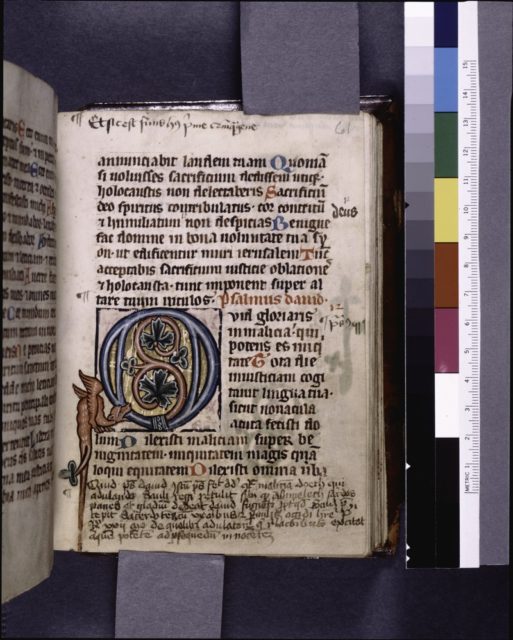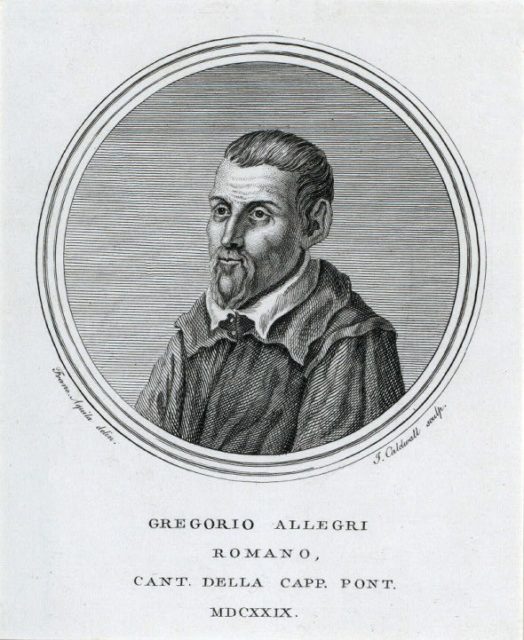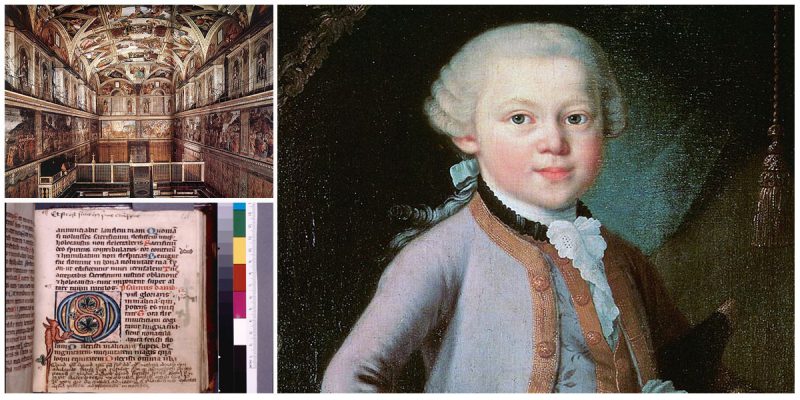Composed by the Italian composer Gregorio Allegri during the reign of Pope Urban VIII, Miserere or in full title Miserere mei, Deus, is a setting of Psalm 51 (one of the Penitential Psalms), used during matins in the Sistine Chapel.
It is one of Allegri’s most regarded and popular pieces of music which has been sung annually during Holy Week. Written for two choirs, the composition is an example of Renaissance polyphony surviving to the present day.

Chanted at the service since 1514, this composition was forbidden to be transcribed because the Vatican wanted to preserve the music’s reputation. There was some kind of mystery surrounding the composition and it was only allowed to be performed on Holy Wednesday and Good Friday of Holy Week in the Sistine Chapel. Performing it elsewhere or writing it down was punishable by excommunication. The church gave only three authorized copies of the work to three prominent individuals.
These individuals were the King of Portugal, the friar Giovanni Battista Martini, and Emperor Leopold I. However, in 1770, a fourteen-year-old boy wrote the composition down perfectly, entirely from memory.


This boy was Wolfgang Amadeus Mozart who impressed the world with his work transcribing it. He was visiting Rome at the time, and it was during the Wednesday service that he first heard the piece. Later that day, Mozart wrote what he had remembered when returning to his lodgings. He went back a day later only to correct some small errors in his draft. After three months, Mozart gained fame for the work and was awarded the Chivalric Order of the Golden Spur by Pope Clement XIV.
After Mozart’s version of Miserere, which was published by Dr. Charles Burny in 1771, the ban was lifted and the composition was later transcribed by various compositors, including Felix Mendelssohn and Franz Liszt.

Today, a lot of recordings have been made of the Miserere. It was sung in English in 1963 by the Choir of King’s College in Cambridge and conducted by Sir David Willcocks. The 1661 Sistine codex version was released on CD by the Sistine Chapel in 2015.
Other composers who recorded their versions of the composition are Vincent Dumestre, Louis-Nicholas Clerambault, and Michael Richard Delalande. Modern versions of the composition have been made by Arvo Part, James MacMillan, and Michael Nyman.
